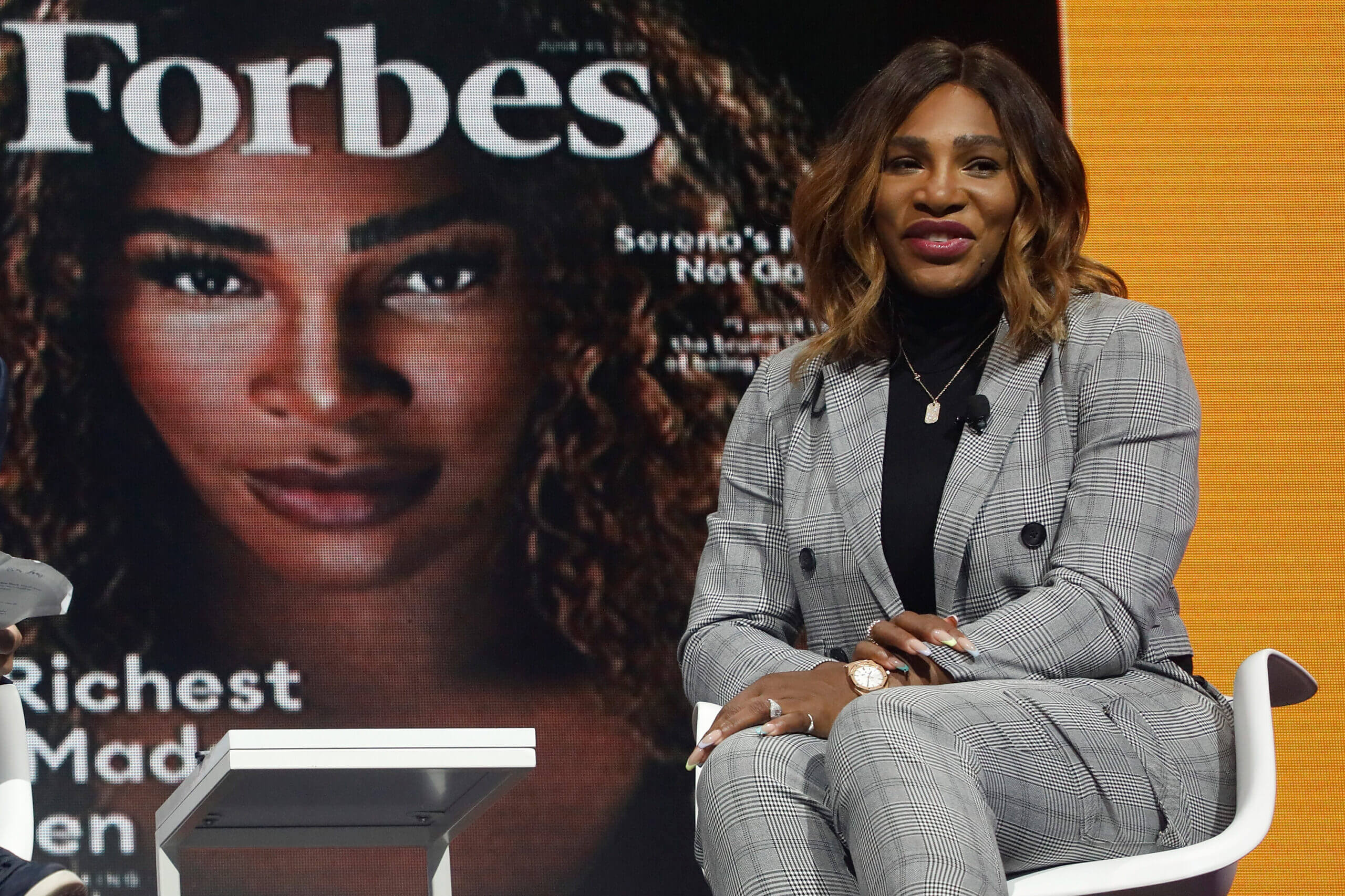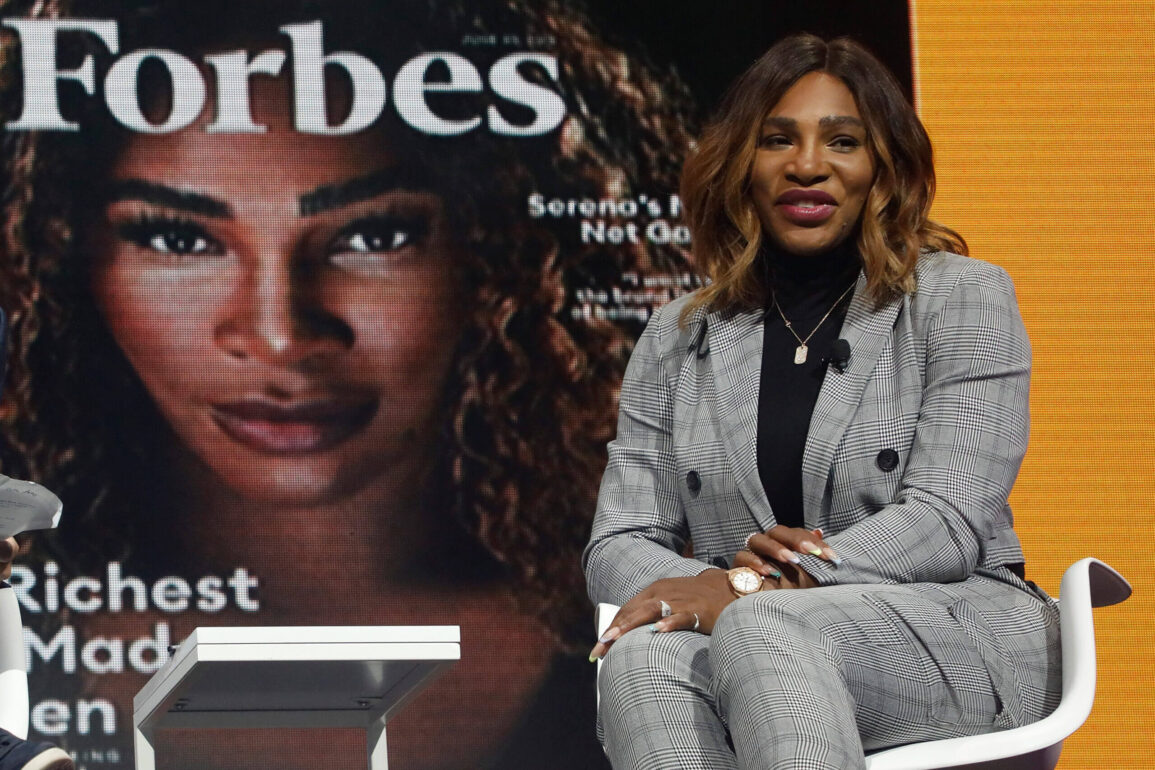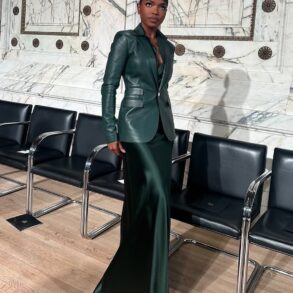As the World Cup plays out across television screens and on mobile devices around the world, the question every marketing executive is asking is: Who is the star?
Who is the player that will emerge from this tournament as a “must have” for brands looking to capitalise on the growing stature of the women’s game?
Advertisement
Once that is decided, then the real work begins.
Think of the highest-profile sportswomen you know.
We’re talking about athletes who are not only famous within their sport and nation but globally famous. The kind of athletes whose names cross over into popular culture. Who are recognised by people for whom the back pages (and indeed The Athletic) are places they simply don’t dare to roam.
Even as a Women’s World Cup is ongoing, for most people, Serena Williams is the first name that comes to mind. Some nine months after announcing she was “evolving away from tennis” in August 2022, the winner of 23 Grand Slam singles titles was the only woman named in the top 50 of Forbes’ 2023 list of the world’s highest-paid athletes. Coming in at number 49, her total earnings hit $45.3million ($35.6m), of which ‘only’ $300,000 came from on-field earnings. The rest is made up of things like endorsements, appearances, licensing and memorabilia income and other business endeavours such as her own clothing brand, Serena.

Serena Williams is one female athlete who has truly transcended her sport (Photo: Taylor Hill/Getty Images)
And it’s tennis players who dominate the list of the world’s highest-paid female athletes, with Naomi Osaka coming in at number 1 in 2021 and 2022. The 25-year-old has not played since September 2022, after announcing her pregnancy in January 2023 and giving birth to her first child in July, but has said she aims to win a gold medal at the Paris Olympics in 2024.
Only three of Forbes’ top 10 highest-paid female athletes in 2022 did not come from tennis: freestyle skier Eileen Gu, gymnast Simone Biles and golfer Minjee Lee.
Highest paid does not always equal highest profile, obviously, but the off-field earnings give a strong indication of commercial interest, which usually ties in pretty closely with an athlete’s profile.
So, why tennis?
Tennis was a first mover in women’s sport, says Wasserman agent Dan Levy, who has managed the careers of USWNT icons Mia Hamm, Alex Morgan and Megan Rapinoe, as well as swimmer Katie Ledecky, who has won seven Olympic gold medals across three Games.
Advertisement
That’s thanks in large part to Billie Jean King, who pioneered the launch of the Women’s Tennis Association and persuaded US Open tournament director Billy Talbot to award equal pay to men and women in 1973, some 34 years before Wimbledon finally caught up and did the same.
The equal opportunities that King fought for meant female tennis players had access to the same platforms as the men — a key factor in elevating the profiles of those athletes.
“You need a platform to create awareness and excitement for you as an athlete,” says Levy. “And tennis has always had those majors: Wimbledon, US Open, French Open, Australian.”
Without that platform, building a global star is nigh-on impossible.
Women’s football had no real global platform until the first World Cup took place, in China in 1991, with the Olympic tournament following five years later in 1996. But it wasn’t until 1999, when the U.S. hosted its first Women’s World Cup, that the event started to create enough noise to make some parts of the world sit up and listen.
“That was the first event that created a sizeable platform for women’s football in the United States with sold-out stadiums and the U.S. team playing so well,” says Levy. “There were many great players on that team, but Mia (Hamm), as one of the leaders, was sort of anointed one of the faces of that event. And so that helped lead to her stardom.”
Levy names Hamm as the first global star to emerge from women’s football. During her time on the USWNT, she signed endorsement deals with the likes of Pepsi, Nike, Powerbar and Gatorade, featured on the covers of Sports Illustrated and Time magazines and appeared on popular TV shows including the Late Show with David Letterman, Good Morning America and The Oprah Winfrey Show.
But the landscape Hamm inhabited was a very different one to the one that exists for the likes of Morgan, Sam Kerr, Marta and whoever the next stars might be to emerge from this World Cup.
Advertisement
“We relied on television networks to remind people of who these athletes were and their greatness,” says Levy. “Unlike the men, who have a Champions League every year that millions of people follow, or the Premier League which is every weekend for almost the whole year, women’s sport was so reliant on those big events like the World Cup or Olympics. Every four years is hard… It’s hard to maintain that relevancy.”
Alongside the continuing development of (some) domestic leagues, the growth of social media has helped change that. Athletes can now keep themselves front-of-mind for their fan bases and even continue to grow that fanbase when they might not be performing — during the off-season or when out injured.
“They’ve created meaningful communities of fans that they can communicate with on a daily basis through their social platforms, and that’s been able to help sustain the momentum that they can create at those big events,” says Levy. “So you can continue to grow from a marketing standpoint.”
But even in this landscape where women’s football is more visible and available than it has ever been, it is difficult to name too many players whose profile stretches beyond their sport. Morgan is probably the player whose name is most often mentioned in these conversations. But beyond that?
There are big names (and personalities) such as Rapinoe and Marta who have incredibly high profiles within their home countries and among those who follow women’s football, but do they transcend those things? Probably not.
“It’s a little easier to become a star in an individual sport than a team sport,” says Misha Sher, talent agent and vice-president in sport and entertainment at MediaCom. But either way, it’s not easy to reach the dizzy heights of the likes of Serena Williams.
“It’s very hard because actually, there are very few sports that are global,” says Sher. “And beyond that there are very, very few athletes who transcend their sport, particularly women’s sport because, outside of tennis, traditionally women’s sports aren’t that visible. They don’t have the profile.
Advertisement
“People say, ‘Oh, but the Lionesses…’ but just over a year ago, they could have been walking down the street and no one would know who they are. I work with Alessia (Russo) now and when I meet her in Soho (London) people are tweeting about it saying, ‘I think I just saw Alessia Russo walking to…’.
“Those things take time. There’s a bit of a lag between some of the things people are talking about in terms of attendances growing, visibility growing, and those athletes in those sports becoming genuine stars, featuring in global commercials and so on.”
It’s more than a matter of time, though. There are a multitude of reasons why some athletes become global stars while others remain lower down the profile scale. But the number 1 factor according to Levy is the obvious one: “You definitely have to be great (at your sport). You have to deliver in the biggest moments with the brightest lights. So if you have that platform, like a World Cup, and you deliver a moment or moments, then it just comes down to a) continuing that greatness — you can’t just be a flash in the pan. And b) unfortunately, for women, you have to really continue to work. You have to be willing to say ‘yes’ to important partnerships, or spend the time with your sponsors on creating advertising campaigns that you’re fully involved in developing.
“It’s not just good enough being great at your sport. There are a lot of male athletes who can just be one of the top two or three best players in their sport and have that kind of notoriety because of how they deliver on the field or on the court. That’s not true in women’s sports. One day hopefully it will be, but it’s not right now. You have to do the work.”
There is a certain craft in turning an elite athlete into a global star, says Sher, adding that as well as being very good at their sport (“you don’t have to be the best”), they have to be marketable away from the field of play.
“The big thing there is: how much does the athlete transcend sport and how relevant are they in popular culture? That’s the biggest determinant and that’s something you can craft and influence.”
Sher points to Serena Williams as an example of this, describing her as “very intentional” about the profile she wanted to build. He believes the reason she became such a star is not because of her talents on the court but because she became known globally as “a trailblazing woman”.
Advertisement
He adds: “Being a trailblazing woman is something that resonates with a lot more people than followers of women’s tennis. The way you become marketable is being able to relate to people outside of your ability to play, because the reality is most of the world is never going to be able to do what these athletes do in their sport. Being able to win a Grand Slam or a World Cup is not something people can relate to. But what people can relate to is a story and the interests of these individuals as human beings.
“Whether that’s their love of travel or their views on climate, they have to craft a narrative and a story that people who aren’t necessarily following their sport can relate to. That’s the difference between an athlete and a cultural icon.”
David Beckham is often the example pointed to by marketing experts. According to Steve Martin, global chief executive at M&C Saatchi, who worked with the former Manchester United footballer in his former role as head of PR at Adidas throughout the late 1990s, his elevation to global stardom was the result of a carefully constructed plan.
“It was created, controlled, thought through. And it’s still going to this current day, which has given him the most enduring career. But it was very much crafted with the role of actually elevating (him) over and above football.
“So there was a plan of attack, but it did come from the heart. Because if it feels contrived, and trying too hard, or not real, everybody will see through that now.”
Traditionally, female footballers haven’t had the profile to follow a similar pathway, but now Sher believes they have “all the tools to be able to craft the kind of narrative that allows them to transcend into popular culture and connect with people in different parts of the world around interest points, whether that’s music or fashion or lifestyle. That gives them a much broader base than the particular sport they play.”
Levy says one thing that has added to the success of a lot of female athletes is the work they’ve done to “better their sport”. The USWNT’s fight for equal pay for example has, he says, raised the profile of a number of his athletes. “Also in women’s football, you have women who have been very outspoken for human rights. As a result, as those issues become more global societal issues you have a number of women who are great at their sport raising their hand saying, ‘This is what I believe in. This is how I want to help. This is the work that I’m going to be doing’, like a Megan Rapinoe, for instance, who only raised her profile in a meaningful way outside of the sport of soccer.”
Levy’s not suggesting this is the right path for everyone, and alongside Martin and Sher is at pains to point out that these things need to be “organic”.
“It has to come from the individual,” says Sher. “You can’t pretend to be something you’re not. People are too clever. But when you actually sit down and get to the core of what each individual is about then you can work with them on how to bring that narrative out over time.
“And it’s different for different people. Not everybody has to be on the cover of Elle magazine (as Ella Toone and Russo were on the eve of the World Cup). Some athletes have the opportunity to be global superstars who can transcend territories. There are others whose audience might be smaller.

Russo’s move to Arsenal has increased her earnings significantly (Photo: David Price/Arsenal FC via Getty Images)
“Maybe they have the opportunity to build an audience with the LGBTQ community because they are part of that community. They have a voice, they have a profile, they have a narrative, they have a story. And actually, if you focus on that in terms of what you do, where you do it and who you do it with, over time you start to build a voice and relevance and profile in that community.
“It’s important not to get carried away by thinking there is only one way to build a brand as an athlete. There isn’t. Not everybody has to compete with Serena Williams at that level.”
Not everybody has to, and not everybody wants to.
“It’s definitely a personality thing,” says Levy. “This is what we talk to our athletes about all the time: The most important thing is to perform at the highest level on the field with your team-mates. If you can do that, and all this other stuff, and continue to be comfortable and excited and happy, then great. But if it becomes something that isn’t natural for you, or isn’t something you gravitate towards from a personality standpoint, then that’s not great.
“It needs to be almost like an energy giver when you do that stuff, as opposed to something that’s draining you. It’s a bandwidth thing. Some athletes have the capability to continue to work off the field, because sitting around would bother them. Others need that quiet time to recover, and don’t want the noise. And if they had the noise it would take away from their next training session or the next game.”
Leading up to the World Cup, Russo completed the most high-profile transfer move in Women’s Super League history, swapping Manchester United for Arsenal and added a multi-year partnership with eyewear brand Oakley to existing deals with Adidas and Beats by Dre. It’s all part of what Sher says is a grand plan to make her the next Serena Williams. The next David Beckham.
“She’s in a prime position. She’s 24, so if you put all the building blocks in place and you know where you’re trying to get to and why you’re partnering with certain companies and how you want to show up and what’s the story that you want to tell, it’s all by design.
“A lot of people now are saying, ‘Wow, I can’t believe she’s turning up everywhere. She went from a backheel (scored in the European Championship semi-final against Sweden) and a super sub to one of the most marketable athletes in the world’. All of that is happening by design. There is a reason why she’s turning up in the places she is. And there isn’t a lot of that, unfortunately, in women’s sport. That thinking just doesn’t exist. It’s very transactional. It’s very short term.
“We always ask ourselves this question: for what? We can turn up in this documentary, but for what? How does that action get us closer to where we want to be? And I just don’t think that people are asking those sorts of questions. They just go from one thing to the next, they get paid whatever it is you get paid for that engagement, for that speaking appearance, or for that campaign. And they just move on. But you can never build a brand by being transactional.”
There are grand plans for Russo’s off-pitch endeavours in the coming years, with Sher talking about her becoming a “trailblazer in how a female athlete can properly build an enterprise around themselves”, taking it beyond the immediate day-to-day, beyond the Lionesses and the history-making Euros victory. “It’s about: how do we leverage the elevation of women in society, the growth of women’s sports, to build something that can sustain her over many years to come, beyond her retirement?”
It’s easy to dismiss these kinds of conversations as being less important than the sport itself. But there is very real value in a sport having a global star within its ranks. Look at what Usain Bolt did for athletics, the Williams sisters (Venus, as well as Serena) for women’s tennis. Ronda Rousey and Conor McGregor for UFC.
“High-profile stars can continue to generate attention,” says Sher. ”Why has Formula One gone to such lengths to do what it does with (Netflix series) Drive to Survive and creating content, if the sport is really just about performance?
“Because it’s clearly not just about performance, it’s about the stories of the individuals that you want people to buy into. Someone once told me the shortest distance between two people is a story, and it’s so true because now, you have house mums in Kentucky who’ve never seen an F1 race but who know about Lando Norris. That’s the power of having stars. That’s the power of being able to relate to people.”
And in a sport like women’s football, which is still growing in so many ways — especially commercially — they can be even more powerful.
“Stars draw people, they draw commercial partners, they draw television. And that’s the engine for growing the game,” Sher continues. “Look at what happened with Lionel Messi going over to MLS. He’s one player and he’s able to completely transform the interests of the fans, the sponsors, the television companies, the owners. The franchise values go up. The value of everything goes up when you have someone who attracts that kind of attention from all the key stakeholders.
“That’s why you need female stars.”
Building them isn’t a quick or easy process. But as the platform for the women’s game continues to broaden, more and more players will find themselves in a position to either work towards that goal or perhaps ignore it entirely. The choice is now theirs.
(Top photo: Getty Images; design: Eamonn Dalton)
This post was originally published on this site be sure to check out more of their content.









